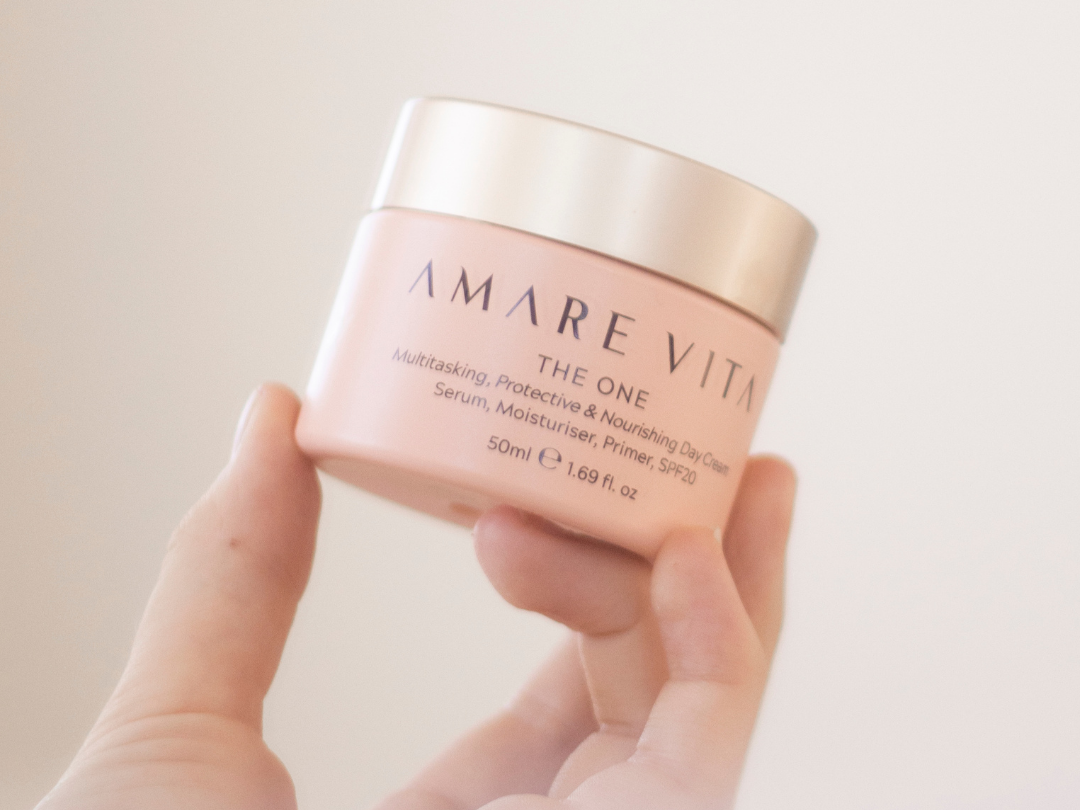
Written by Ita Ohayon, founder of Amare Vita Skincare
In terms of skincare, many of us have long been under the impression that using more is better. Whether it be layering a ridiculous number of products on top of each other, exfoliating in excess or stripping the skin of its natural barriers through product misuse, it can be hard to find the right balance of products for your skin.
This trend has only been made worse through the popularity of the ‘shelfie’. If you scroll through the ‘skincare’ hashtag on Instagram, you will be faced with millions of photos displaying bathroom cupboards and counters scattered with a vast array of products.
As a result of social media’s increased popularity, aesthetically pleasing, and sometimes excessive, skincare routines have dominated people’s feeds, and featuring the latest “it” product has somewhat become a status symbol.
However, you and your bank account can be thankful, as stripped back skincare appears to be on the rise. But despite an attitude shift only just starting, arguably ‘less is more’ has always been the better approach in terms of skincare.
Dermatologists advise against complicated skincare routines, and instead suggest a streamlined approach that contains a small selection of core products. Not only is it good for our complexion, but taking it back to basics – or ‘skinimising’ – is good for the environment, reducing the number of single-use plastics taken to landfill.
So, the question is, what is ‘skinimalism’, and how do we transition from a complicated routine to a stripped back alternative?
What is ‘skinimalism’?
The term ‘skinimalism’ was coined after it began popping up on TikTok and beauty blogs in early 2021 and is now a major topic in the skincare zeitgeist. It emphasises a stripped back, simple skincare routine, which came as a relief to those that don’t have the time or funds for multi-step routines.
Consumers are growing tired of unrealistic beauty standards and obsessions with filters, and in 2021, the UK’s Advertising Standards Authority [ASA] ruled that influencers must state when they use a filter on any posts promoting skincare or cosmetics. So, after years of caked-on makeup looks and airbrushed skin, it would appear the next beauty movement is a complete 180.
The increasing popularity of showing our natural skin doesn’t stop new products from being released at a dizzying pace, which can make building a ‘skinimalist’ routine feel overwhelming. But, before you commit to clearing out your medicine cabinet in favour of your top five products, it’s important to ensure that you’re holding onto the right ones.
Too much of a good thing
Excessive skincare efforts can leave behind a trail of destruction in the form of irritation, redness, a compromised skin barrier, and in some cases, acne. Using too many products or incorrectly layering products can overstimulate, confuse and strip your skin. When the skin gets overwhelmed, you may find the products you are using have an adverse effect on your skin.
It is also important to bear in mind that there is no such thing as a product which is good for one part of your face and not the other – all skin shares the same everyday needs, so you can avoid buying two moisturisers – for example, one for day and one for night – and stick with one well formulated product.
If you’re using a multi-tasking product, it’s important to know whether the formula contains more than one active ingredient, and if so, are they at the correct ratio for your skin? Some ingredients actively work against each other, some do a similar job, and some actively enhance one another.
Overusing or combining ingredients, such as retinols and acids, should be avoided as they can cause painful irritation and increased dryness. These issues prompt some to use thicker, more cloying creams, which will only make the problem worse.
If you’re unsure about the best combination of products, you should consult with a dermatologist or skincare expert before applying any new products to your skin.
How to ‘skinimise’
Unless you suffer from a skin condition, such as eczema, rosacea, or acne, your skincare routine doesn’t need to be intricate. ‘Skinimalism’ is about making the most of multi-tasking products and committing to a sustainable, and potentially cheaper, skincare routine.
For those with skin considered ‘normal’ or ‘combination’, just a handful of products will do. Everyone should have a gentle cleanser for daily use, and a morning dose of antioxidants, such as vitamin C, to help protect against pollution and environmental stressors.
Retinoids in the evening can be a great way to rebuild collagen and promote skin cell turnover, but should be used sparingly to prevent irritation. It’s important to remember that retinol is not for everyone, and that bakuchiol, a naturally occurring alternative, can be used to offer many of the same benefits in a safer way. SPF should be non-negotiable in your skincare routine, and dermatologists recommend applying SPF30 or higher daily, even in the winter.
Skincare can be simple and inexpensive when using the right products, and once you find a routine that works for you, try to avoid the temptation to frequently throw something new into the mix, as the old saying goes, if it’s not broke, don’t fix it.
Conclusion
If you’re a skincare newbie or a self-professed expert that’s exhausted with the same old routine, ‘skinimalism’ is definitely something to consider. It’s also an ideal way to introduce an easy and consistent routine for you to stick with long-term.
But if you’re not ready to give up your creams, and serums, and oils, oh my, that’s okay too. While ‘skinimalism’ works for some, it won’t automatically be the perfect fit for everyone. Doing what’s best for your skin is the goal, so consider speaking with a dermatologist or skincare expert to discuss which path might be right for you.



